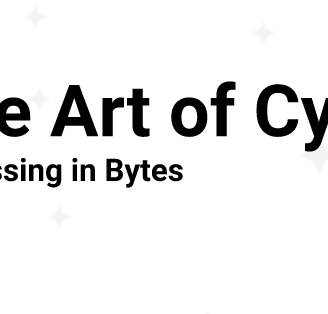Supply Chain Security: Safeguarding the Backbone of Modern Commerce
Discover the latest trends in supply chain attacks, assess evolving risks, and learn why robust supply chain security is critical for organizations in 2025.
CYBERSECURITY
TAOCS
5/30/20253 min read

In today’s hyper-connected global economy, supply chains extend across multiple geographies, vendors, and digital platforms. From raw-material sourcing in Asia to manufacturing hubs in Europe and distribution centers in North America, organizations rely on complex, interdependent networks to deliver products and services. While this interconnectedness drives efficiency and innovation, it also amplifies vulnerability. Supply chain security has emerged as a top priority for enterprises, governments, and industry consortia alike. As businesses embrace digital transformation—integrating IoT devices, cloud services, and third-party software—the attack surface expands exponentially. In 2025, the average enterprise works with hundreds, if not thousands, of suppliers, each representing a potential entry point for malicious actors. Understanding current market dynamics and emerging threats is crucial for building a resilient defense posture.
Trends Around Recent Supply Chain Attacks
2.1 Shift to Software and Service-Level Attacks
Software Supply Chain Exploits: High-profile breaches like the SolarWinds incident in 2020 set a precedent. In 2025, attackers increasingly target open-source libraries, CI/CD pipelines, and code repositories to inject malicious code into trusted software packages.
API-Centric Breaches: As organizations expose APIs to integrate services (ERP, CRM, logistics), misconfigured API gateways have become a favorite vector. Threat actors exploit weak authentication or lack of rate limiting to exfiltrate data or deploy ransomware.
• Third-Party Service Compromise: Recent breaches underscore how a single compromised vendor can cascade across multiple customers. In early 2025, a major incident involving a popular payment processor led to unauthorized transactions and data leaks affecting thousands of retailers globally.
2.2 Rise of Automated, AI-Assisted Attacks
Autonomous Reconnaissance: Malicious bots now crawl supplier ecosystems—Git repositories, package managers, and billing portals—identifying vulnerable dependencies and outdated software versions at scale.
Phishing at Scale: AI-driven phishing campaigns leverage social engineering to impersonate legitimate suppliers, tricking employees into revealing credentials or installing malware. These highly targeted “spear-phishing” attacks exploit publicly available information (LinkedIn profiles, WHOIS records) to craft convincing lures.
2.3 Regulatory and Compliance Pressures
• • Supply Chain Due Diligence Laws: New regulations in the EU, US, and APAC require organizations to vet subcontractors for cybersecurity posture, conduct periodic risk assessments, and disclose significant incidents within strict timeframes. Businesses are investing in continuous monitoring tools to stay compliant.
Potential Risks and Threat Surface for Supply Chain Attacks
Third-Party Software Dependencies
Open-source libraries and NuGet/PyPI packages may contain malicious backdoors.
Lack of version control and provenance tracking increases the chance of trojanized dependencies.
Cloud Service Integrations
Misconfigured Identity and Access Management (IAM) roles allow lateral movement.
Weak API credentials stored in shared code repositories lead to unauthorized access.
Firmware and Hardware Vulnerabilities
Compromised firmware in networking equipment or IoT sensors can establish persistent access to critical infrastructure.
Supply chain insertion attacks at the manufacturing level can evade traditional endpoint defenses.
Logistics and Physical Distribution Risks
Tampering with shipping containers or tracking devices can lead to theft of goods or insertion of malicious hardware implants.
Counterfeit components entering the production line can introduce hidden vulnerabilities (e.g., compromised chips).
Human and Process Weaknesses
Inadequate vendor security assessments and infrequent audits create blind spots.
• • Lack of standardized security questionnaires and failure to enforce Service Level Agreements (SLAs) increase exposure.
Importance of Supply Chain Security
Protecting Critical Infrastructure
Supply chains underpin vital sectors—healthcare, energy, finance, and transportation. A successful supply chain breach can disrupt essential services, leading to severe economic and societal impact.Maintaining Customer Trust and Brand Reputation
When third-party compromises result in large-scale data breaches or service outages, consumer confidence erodes. According to recent studies, 43% of customers will switch to a competitor after a high-profile security incident.Ensuring Regulatory Compliance
Regulations such as the EU NIS2 Directive, US Cybersecurity Disclosure Act, and emerging APAC supply chain security frameworks mandate rigorous oversight. Non-compliance can result in hefty fines (up to 4% of global revenue) and legal liabilities.Avoiding Financial Loss
The average cost of a supply chain breach in 2024 exceeded $8.2 million, accounting for downtime, remediation, and reputational damage. Investing in supply chain security tools—vendor risk management (VRM), software composition analysis (SCA), and continuous monitoring—is more cost-effective than reactive incident response.
• • Securing the Extended Enterprise
In an era where collaboration spans multiple organizations, a weak link in a single vendor can compromise the entire network. By implementing mature supply chain security programs, including strict access controls, regular third-party audits, and automated threat intelligence, companies can safeguard their digital ecosystem.
What’s Next?
As supply chains grow increasingly complex, attackers continuously innovate—exploiting software dependencies, subverting IoT devices, and leveraging AI for advanced reconnaissance. Supply chain security is no longer an afterthought; it is a foundational element of any robust cybersecurity strategy. But here’s the catch…
Are traditional security tools enough to protect tomorrow’s interconnected networks?
In the next post, we’ll investigate emerging technologies—from blockchain-based provenance tracking to zero-trust vendor ecosystems—that promise to redefine how organizations verify and secure every link in their supply chain. Stay tuned.
Subscribe newsletter

